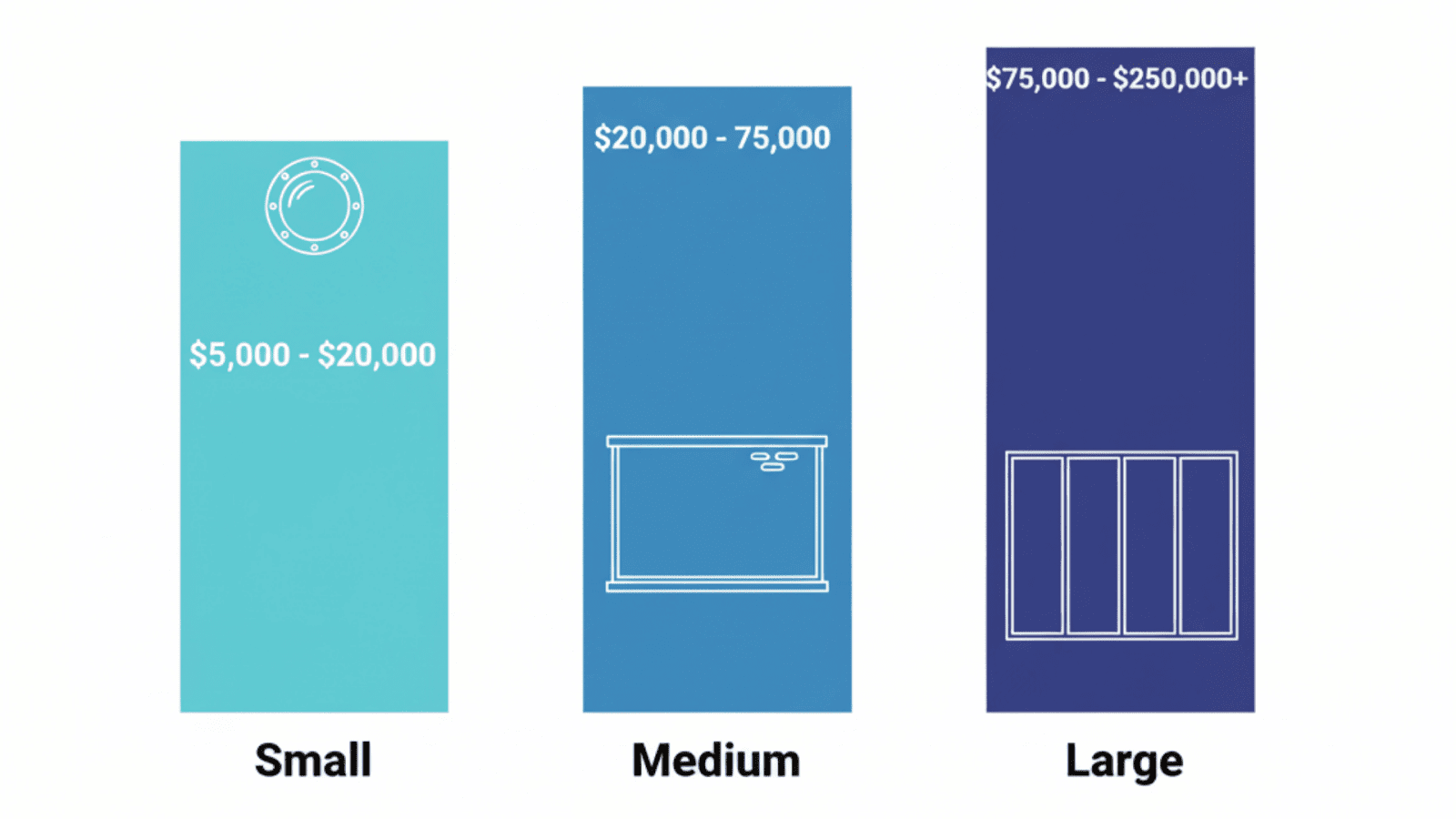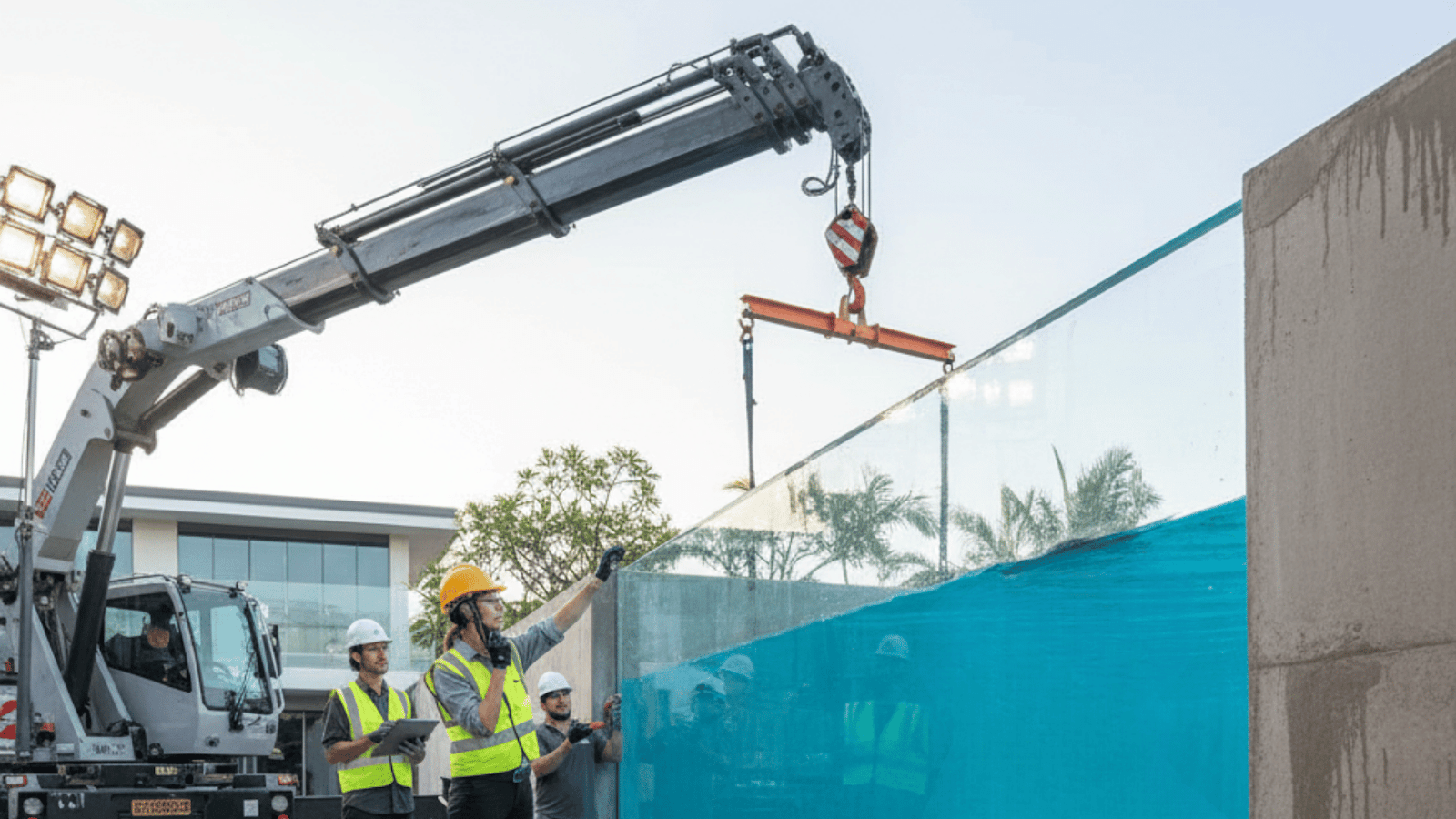Underwater Windows in Swimming Pools – Purpose & Applications [2025]


Over the last three decades in pool construction, I’ve seen design trends come and go—mood lighting, infinity edges, smart controls. But one feature that has truly stuck, and continues to evolve is the underwater window.
I’ve personally worked on installations from small circular portholes in private homes to full transparent walls in luxury hotels. And I can tell you: the reaction is always the same. Silence, then smiles, and then the phones come out. Guests, homeowners, and athletes don’t just see a pool anymore, they experience it.
Underwater windows bring practical value for architects, sports coaches, and even cinematographers. In fact, the deeper you dig into their applications, the more you realize they’re reshaping how we design swimming pools.
So in this quick article, I will share the purpose and some of the applications of underwater windows. You will love it and possibly, get ideas to set them in your pool as well.
Let’s begin.
TL;DR
- Underwater windows are acrylic or laminated glass panels built into pool walls, engineered to handle high water pressure while providing visibility.
- Their purpose ranges from aesthetics and lighting to swimmer observation, training analysis, and even film production.
- Hotels use them to boost ratings, homes use them for natural light, and sports facilities rely on them for coaching.
- Small portholes start around $4,000, while large hotel-grade walls can exceed $200,000 once installation and reinforcement are factored in.
- Always consult professionals (such as Hammerhead Pools) for installation. Structural mistakes can cause leaks or panel failure, so this is never a DIY job.
Now, let’s get into the details.
What Are Underwater Windows in Swimming Pools?

At their core, underwater windows are transparent panels, most commonly made from cast acrylic, set into the walls of a pool or aquatic tank. Unlike ordinary glass, these panels are engineered to withstand constant hydrostatic pressure.
In a residential backyard pool, an underwater window might just be a small porthole linking the water to a lounge or gym. In commercial projects, the concept scales up to entire transparent walls weighing several tons.
Acrylic is the material of choice because:
- It’s lighter and stronger than glass at equivalent thickness.
- It doesn’t shatter but instead flexes slightly under pressure.
- It can be manufactured in panels thick enough (often 150–200mm) to handle extreme depths.
The result is a feature that feels like art but performs like engineered infrastructure.
Purpose of Underwater Windows

When people first see an underwater window, they usually think it’s just a design flourish. In reality, their purpose spans four key areas:
- Aesthetics & Design
They transform an ordinary pool into a showcase, creating open spaces, visual drama, and photo-worthy experiences. - Practicality & Lighting
They let natural light pass into adjacent rooms or enclosed basements, reducing claustrophobia and brightening spaces. - Observation & Training
Coaches, parents, and lifeguards can observe swimmers’ movements without diving in. Sports facilities rely on this for stroke analysis. - Media & Research
Photographers, filmmakers, and marine researchers use them to capture underwater scenes without specialized diving gear.
In other words, they’re not regular windows. They are functional tools that elevate how pools are used and experienced.
Some Applications Of Underwater Windows
Following are some of the ways I have put underwater windows to use throughout my career.
1. Hotels & Resorts – Turning Pools Into Marketing Assets

If you’ve ever seen the Helsinki pool project (one of the more famous examples in Europe), you know how powerful an underwater window can be for a hotel. Ratings jumped simply because guests couldn’t stop sharing photos.
A transparent wall overlooking a skyline, ocean, or even the hotel bar becomes more than a pool, it’s a live billboard. I’ve worked on resort projects where the marketing team considered the glass wall “paid for” within the first year thanks to free exposure from guest photos.
2. Private Homes – Functional Meets Artistic

Homeowners are increasingly asking for underwater windows in residential builds. Why? Two main reasons:
- Light: A basement gym or spa suddenly has natural illumination from the pool.
- Design impact: A small circular porthole transforms a backyard pool into a conversation piece.
On one project in Dubai, we installed a 2m-wide acrylic panel in a villa pool that opened into the living room. The owner joked that he’d created “the most expensive TV screen” in the neighborhood, but admitted it became the most photographed spot in his house.
3. Sports Facilities – Training Without Getting Wet

Underwater windows started as a coaching tool. They let trainers observe stroke technique, body position, and turns, without having to dive in.
At competitive depth, engineering matters. Acrylic panels for training tanks often exceed 150–200mm thickness, designed to withstand pressure at 15–20m depths. I’ve seen coaches set up cameras behind these panels, capturing footage that’s later analyzed frame-by-frame. This feedback loop can shave valuable tenths of a second off competitive swimmers’ times.
4. Film & Photography – Making Shots Simpler

If you’ve ever tried filming underwater, you know the nightmare… fogging masks, distorted light, limited oxygen. That’s why cinematographers love underwater windows. They let you stage, light, and capture scenes with complete control.
On a project in Spain, a resort actually rented out its pool with a glass wall to a film crew. What could have been a week-long underwater shoot was wrapped in three days—without a single diver.
5. Beyond Pools – Wider Applications

Underwater windows are also making waves outside swimming pools:
- Public aquariums: Large panoramic panels.
- Cruise ships: Glass-bottom walkways and underwater lounges.
- Research facilities: Marine biology observation without dive crews.
- Luxury spas: Skylights installed below water level for ambient light.
Each use case pushes the technology into new industries, but the core engineering principles remain the same.
Cost of Implementation

This is the question I hear most often: “What’s it going to cost me?”
Here’s what I’ve seen across real projects:
- Small residential portholes (50–80 cm): $4,000–$8,000 including panel, frame, and sealing.
- Medium panels (1.5–2.5 m wide): $15,000–$35,000 depending on depth and thickness.
- Large feature walls (4–8 m wide, often >150 mm thick acrylic): $70,000–$200,000+. Common in hotels.
- High-depth training tanks (depth rating 15–20 m): Well into six figures, as reinforcement and acrylic thickness drive costs higher.
One note: installation costs are often equal to the panel price. Cutting into a pool shell, reinforcing it structurally, sealing the acrylic, and testing under pressure—it’s highly specialized work. This is not the place to save money.
Final Thoughts

Underwater windows have come a long way from being a novelty feature in aquariums. Today, they’re a practical, engineered solution that reshapes how we design, use, and experience pools. Whether it’s the wow factor in a rooftop hotel pool, the functionality of swimmer observation in a sports facility, or the elegance of bringing natural light into a home spa, these windows prove their worth every single day.
From my years in the field, the most important takeaway is this: underwater windows are equal parts design and engineering. They can transform a pool into an architectural masterpiece, but only when planned and executed with precision.
Expert Underwater Window Installation
If you are thinking about adding an underwater window to your project, then do note that this isn’t a DIY upgrade. The acrylic panels, the structural reinforcements, and the waterproofing all need to be executed by specialists.
The investment pays off, not just in aesthetics, but in long-term functionality, property value, and user experience. You may consider working with my team, Hammerhead Pools, and get a free quote.
Or if you have questions about what I shared above, then you may leave a comment and I’ll try to answer using my experience.
FAQs
1. Are underwater windows strong enough for deep pools?
Yes. Acrylic windows are engineered to handle enormous hydrostatic pressure. Panels can be over 200mm thick for deep tanks, and they’re stress-tested before installation.
2. Do they scratch or yellow over time?
Acrylic can scratch if cleaned with abrasives, but with proper tools it stays clear for decades. High-quality panels are UV-resistant and won’t yellow.
3. Can I retrofit a window into my existing pool?
It’s possible, but costly. You’ll need structural reinforcement and a partial rebuild around the opening. It’s far easier (and cheaper) to plan it in from the start.
4. How do you clean them?
A soft sponge or microfiber cloth is enough. For hotel pools, staff often integrate window cleaning into their standard pool maintenance schedule.
5. Do underwater windows affect heating or energy efficiency?
Not if properly installed. Acrylic insulates well, and sealed frames prevent thermal loss just as effectively as concrete walls.
6. What’s the most common mistake with underwater windows?
Underestimating installation. Too many people focus on the panel cost, but the real challenge is the structural and waterproofing work around it. Always budget for both.
If considering underwater windows for a pool or aquatic project, always rely on professional expertise for planning and installation. Acrylic and glass panels must be engineered and reinforced precisely to avoid leaks, safety risks, or structural failures. The investment pays off in aesthetics, property value, and daily functionality, making pools safer, brighter, and more engaging for all users. For guaranteed results, work with specialists like Hammerhead Pools—request a free quote to ensure robust engineering and seamless installation. Proper planning and professional execution will turn underwater windows into lifelong assets for any property.











